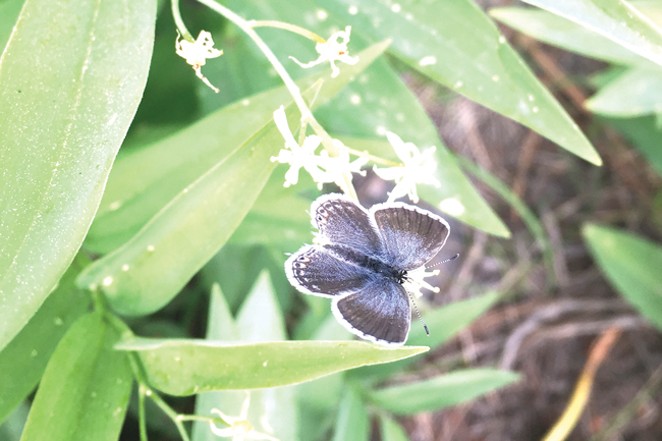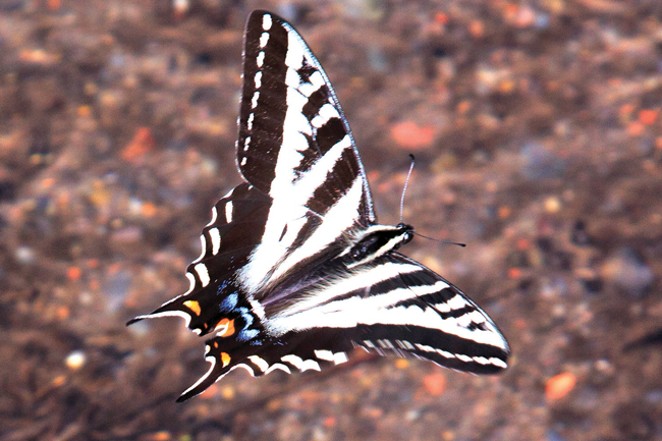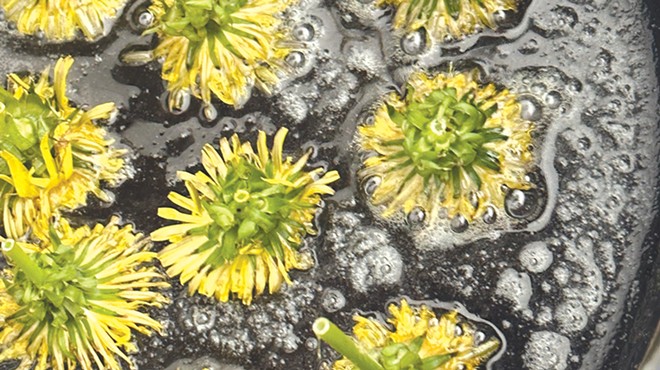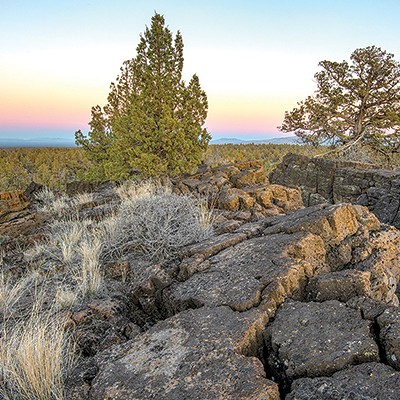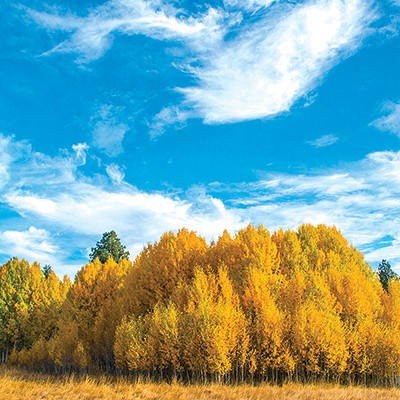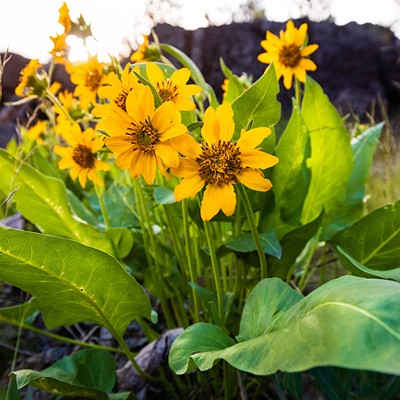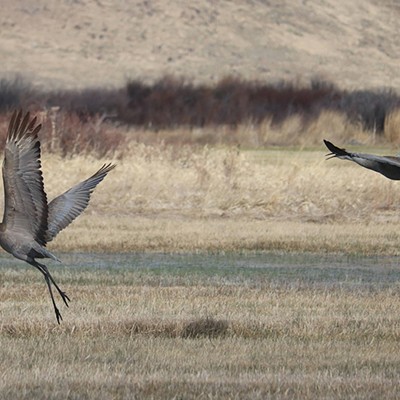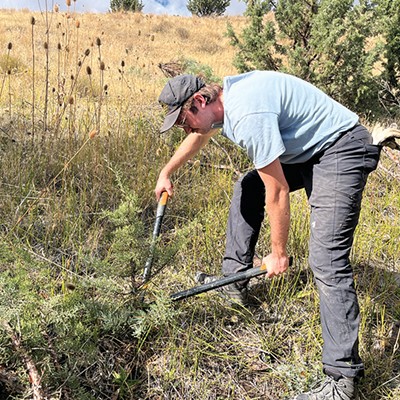Butterflies flitting about the forest, meadow, or your yard are a sure sign of summer in Central Oregon. Warmer weather and blooming flowers bring out a wide variety of these amazing, delicate creatures, making them easy to spot and watch. It's the bright colors that catch many people's eye, but did you know that all butterflies are also deeply connected to the land around them? They rely on native plants as hosts for laying eggs, to provide the food young caterpillars need to survive, and as nectar sources to sip the liquid ingredients they need for nourishment. One of the most well-known examples is, of course, the monarch butterfly, which relies on milkweed as its sole host plant for egg-laying and caterpillar leaf-munching. This intricate relationship between butterfly and plant lends to the wonder of nature, and also offers a clue for where to look to find and identify the butterfly. Here are five butterflies to watch for that are common in early summer, along with their host plants and nectar sources:
California Tortoiseshell, Nymphalis californica. This medium sized (~ 2.5 inches) butterfly is bright orange with black wing margins and black spots. They are very common in Central Oregon and are often seen starting in late winter or early spring since they overwinter as adults, often hiding in crevices and other sheltered locations. Tortoiseshells rely on snowbrush (Ceanothus velutinus) as their host plants. This large shrub is a common understory plant in our pine forests that, when blooming, is covered in masses of white flowers. Tortoiseshells will lay their eggs in bunches on the snowbrush, and then the caterpillars will eat the leaves once they emerge. Snowbrush is a nectar source for these butterflies, but they will also sip from other flowers, from sap and even from drippy fir needles in spring! Tortoiseshells can be spotted flying about spring through fall, and even on warm winter days.Pale Tiger Swallowtail, Papilio eurymedon. This large (3+ inches) striking butterfly has pale white-to-cream wings with black windowpane markings, and bright orange and blue marks near its two long slender tails. Like the California tortoiseshell, pale swallowtails use snowbrush as a host plant, but they will also use oceanspray and serviceberry. Serviceberry (Amelanchier alnifolia) is a stunning native shrub that is covered with white blooms each spring. You'll find it (and the pale swallowtail!) throughout Central Oregon as an understory plant in our pine forests and along our creeks and rivers. Pale swallowtail nectar sources include chokecherry, mints, lilies and penstemons. Look for these beautiful butterflies flying about most often in early summer.
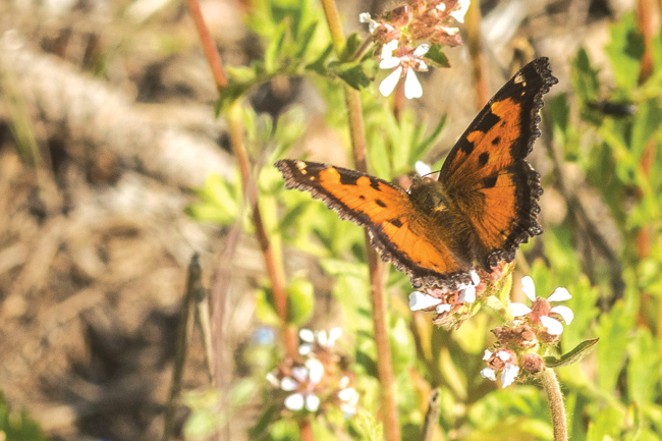
Western Tailed Blue, Cupido amyntula. There are many different species of small blue butterflies in Central Oregon. In order to tell the difference between them, you typically need to see the underside of their wings, which can be a bit tricky given their small size and constant movement. The western tailed-blue is an average size for a blue (~1.25 inches), and it is one of the easiest blues to identify due to the tiny "tails" projecting off its hindwings (hence its name). These winged jewels rely on a variety of plants from the pea family (like milkvetch and golden pea) for egg laying, and will nectar from the same, as well as other wildflowers, rabbitbrush, and more. Look for the Western Tailed-blue in wet spots along our local trails where they frequently "puddle," sipping salts and minerals from damp soil.
Pale Tiger Swallowtail, Papilio eurymedon. This large (3+ inches) striking butterfly has pale white-to-cream wings with black windowpane markings, and bright orange and blue marks near its two long slender tails. Like the California tortoiseshell, pale swallowtails use snowbrush as a host plant, but they will also use oceanspray and serviceberry. Serviceberry (Amelanchier alnifolia) is a stunning native shrub that is covered with white blooms each spring. You’ll find it (and the pale swallowtail!) throughout Central Oregon as an understory plant in our pine forests and along our creeks and rivers. Pale swallowtail nectar sources include chokecherry, mints, lilies and penstemons. Look for these beautiful butterflies flying about most often in early summer.
Lorquin's Admiral, Limenitis lorquini. One of our most stunning butterflies, the Lorquin's never fails to capture attention! It's one of our larger local butterflies (~3 inches) and is vividly colored: jet black slashed with glowing white diagonal stripes, orange wing tips on top, and brick red and white below. Its host plant is typically willow, but also aspen, cottonwood, serviceberry, oceanspray, and others. Willow is one of our most common shrubs, and it can be found in a wide variety of habitats including along our creeks and rivers. Lorquin's Admirals are often seen perched on Pacific ninebark, sipping from mock orange, or visiting mustards, yarrow, thistle, dogbane, and others to refuel.
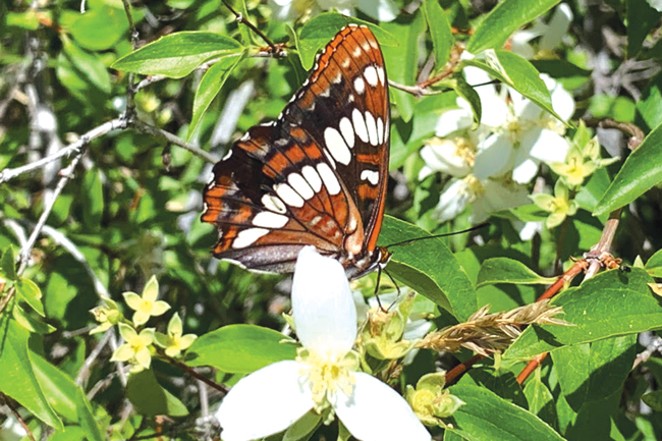
Two-Banded Checkered Skipper, Pyrgus ruralis. Skippers are another family of butterflies that have a more stout, compact body, more rapid wing beats to gain flight, and hooked ends on their antennae. The two-banded checkered skipper has dark wings with white "checker" patterns, and ranges in size from 1-1.5 inches. They are a common sight in late spring/early summer, often nectaring on dandelions, strawberries and other early bloomers. Mallows are a favored host plant, as are cinquefoils and strawberries. You can spot these skippers in a wide variety of habitats, from woodlands to meadows, pastures, and backyards.
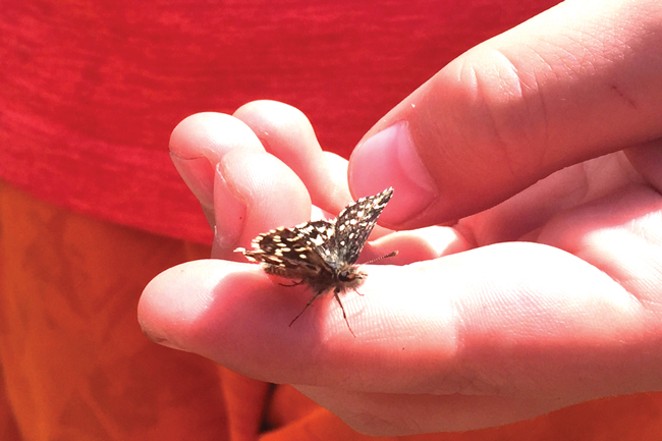
Wondering where to find some butterflies to watch? Head to Deschutes Land Trust's Metolius Preserve where you can see all these species. Park at the north trailhead and walk the Larch loop for the best viewing opportunities. And, always remember, butterflies are fragile creatures. They have delicate scales on their wings that can fall off when touched, so they are best viewed from a distance using binoculars. Happy butterflying!
Sarah Mowry is Outreach Director for Deschutes Land Trust. Amanda Egertson is the organization's Stewardship Director.

